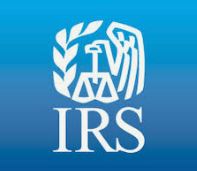
The Internal Revenue Service, in partnership with the tax preparation community, has devised a new process that will allow tax practitioners to access employer information needed for return preparation and electronic filing while also protecting taxpayer data.
The new process is part of a series of steps planned by the IRS to enhance safeguards around the tax transcript format and distribution to better protect taxpayers from identity theft. A transcript is a summary of tax return entries on the Form 1040 series.
In September 2018, the IRS began partially masking the personally identifiable information for all individuals and entities listed on an individual tax return. The redesigned transcript will fully display all financial entries. See New Tax Transcript and Customer File Number for details.
In addition to masking PII data, the IRS also will stop faxing transcripts as of February 4, 2019 to both taxpayers and authorized third parties, including tax professionals. This safeguard applies to both individual and business transcripts.
Individual taxpayers may view their masked transcripts at Get Transcript Online or order by mail for delivery to the address of record. Masked transcripts will still be available to tax professionals through the Transcript Delivery System, an e-Services tool. Business transcripts are not masked and maybe accessed by tax professionals through TDS.
The IRS slightly delayed the date it will stop faxing transcripts and worked with members of the tax professional community on an alternative to faxing that will allow certain tax practitioners access to data needed to file prior-year individual tax returns.
Starting January 7, 2019, tax professionals who meet certain requirements may request an unmasked Wage and Income Transcript. The unmasked transcript will only be sent to the practitioner’s e-Services Secure Object Repository (SOR), a secure electronic mailbox.
The Wage and Income Transcript shows data from information returns received by the IRS such as Forms W-2, 1099, 1098 and Form 5498, IRA Contribution Information. It also shows the full employer name, address and Employer Identification Number (EIN) needed by tax preparation software in order to e-file.
How To Request A Wage And Income Transcript
Tax practitioners must first go to the e-Services’ Transcript Delivery System to obtain a masked Wage and Income Transcript to see if it meets their needs. If employer information is still needed for tax preparation, tax practitioners may order an unmasked Wage and Income Transcript if the client does not have the employment information. The practitioner must:
- Have a Centralized Authorization File (CAF) number in good standing;
- Have an e-Services account and access to the SOR, the e-Services secure mailbox.
Tax practitioners who meet those requirements should take the following steps:
- Call the Practitioner Priority Service line
- Authenticate identity with CAF number, name, Social Security Number and Date of Birth
- Fax a completed authorization form (if needed)
- Request an unmasked Wage and Income Transcript
- Access e-Services secure mailbox to receive the unmasked Wage and Income Transcript
Alternatively, tax practitioners who do not have an e-Services account or SOR access may request that the unmasked Wage and Income Transcript be mailed to the client’s address of record.
To ensure your authorization form is processed timely, please review Fact Sheet 2018-21, IRS Offers Tips to Tax Professionals to Reduce CAF Number Errors, Better Protect Data from Cyberthieves.
The IRS continues to work with the tax professional community and is exploring an option to send masked as well as unmasked transcripts to the security mailbox.
How To Create An E-Services Account
Tax professionals who lack access to the secure SOR mailbox are encouraged to create an e-Services account as quickly as possible. IRS e-Services offers a suite of tools for tax professionals including the Transcript Delivery System that offers immediate access, with proper authorization, to clients’ masked transcripts, and the Secure Object Repository (SOR) which is a secure mailbox for e-Services users only. The SOR is available from the e-Services page or from the TDS menu.
E-Services is protected by a two-factor authentication and identity proofing process called Secure Access. Secure Access provides a rigorous identity proofing process to set up an account and a two-step login process for returning users.
Returning users must enter their credentials (username and password) plus a security code sent to a mobile phone or generated by an IRS2Go app each time they attempt to access their account.
Prior to creating an e-Services account, please review Secure Access: How to Register for Certain Online Self-Help Tools. If you have all the information requested, it will take approximately 15 minutes to complete. If you lack the information or are unable to complete the process successfully, there is an “exception process” for tax professionals. Please see Important Update about Your e-Services Account for alternatives as well as FAQs about e-Services and Secure Access.
Tax practitioners who are not e-Services users and who only want access to the SOR must register and create an e-Services account. They do not need to file any other applications, such as an e-File application.
Tax practitioners who have an e-Services account and who are listed as responsible officials on an e-File application can add delegated users. These delegated users can access the SOR and TDS once they create an e-Services account.
Practitioners who want to access both the SOR and TDS must create an e-Services account and submit an e-File application, if one is not on file. Unenrolled practitioners also must e-file five or more returns annually to access TDS. An e-File application requires a background check and may take up to 45 days to complete so plan accordingly. Additional Information is at Circular 230 Practitioners e-Service Transcript Delivery System Access and at Become an Authorized e-file Provider.
IRS FS-2018-20


















Recent Comments